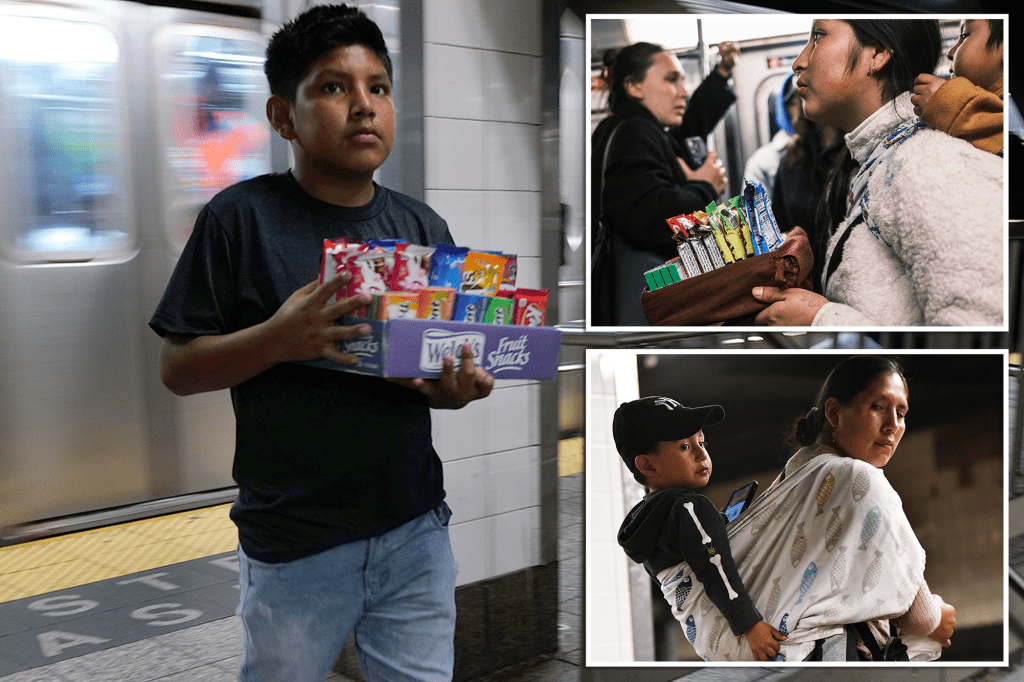Big Apple officials have launched a campaign to prevent migrant children from selling candy in subways and on city streets. City staffers, the NYPD, and the MTA are distributing flyers in Spanish and an Ecuadorean dialect to inform migrant parents about services available to keep their children in school instead of panhandling. The pamphlets also emphasize that it is illegal to sell goods without a permit, with City Hall stating that the health and safety of children are top priorities.
Despite the efforts of officials, migrant parents argue that they need their children’s help in making a living in the city, which aligns with their cultural norms. Some parents, like Maria from Ecuador, explain that they have no choice but to work and have their children assist them in selling candy. Others, like Veronica, believe that utilizing their children’s help allows them to evade police attention. However, Veronica also mentions that she tries to have her daughter work after school to comply with the warnings about kids selling candy in the subway.
The phenomenon of migrant children selling candy in subway stations and on street corners has become increasingly common in recent years as more asylum seekers have arrived in the city. Jose Prado, a Mexican migrant, shares his experience of transitioning from working in textiles to selling candy and churros to make ends meet. Despite being able to earn up to $80 in a day, he recognizes that children can be more successful in pulling at the heartstrings of commuters around the city. Prado also mentions his struggles with finding work due to his age compared to younger migrants.
It is estimated that over 190,000 migrants have arrived in New York City since the influx began in the spring of 2022, with more than 64,000 currently residing in city shelters at the taxpayers’ expense. While some migrants have found work in underground jobs delivering food, others have resorted to panhandling and selling goods on the streets. The economic challenges faced by these migrants, especially older individuals like Jose Prado, highlight their need to rely on their children to help bring in income.
The campaign led by city officials highlights the importance of ensuring the safety and well-being of migrant children, urging parents to utilize available services to keep their children in school and out of panhandling activities. While the intentions of the campaign are noble, the reality of economic challenges faced by migrant families forces them to rely on their children to contribute to the household income. The stories of Maria, Veronica, and Jose shed light on the difficult decisions and circumstances faced by migrant families trying to make a living in the city while balancing cultural norms and economic pressures.
As the situation with migrant children selling candy continues to unfold in New York City, it is clear that a more comprehensive approach is needed to address the underlying issues faced by asylum seekers. While campaigns to deter children from panhandling are a step in the right direction, long-term solutions that address economic opportunities, job access, and support services for migrants are essential. By understanding the challenges faced by migrant families and working towards sustainable solutions, officials can help create a more inclusive and supportive environment for all residents, regardless of their background.


